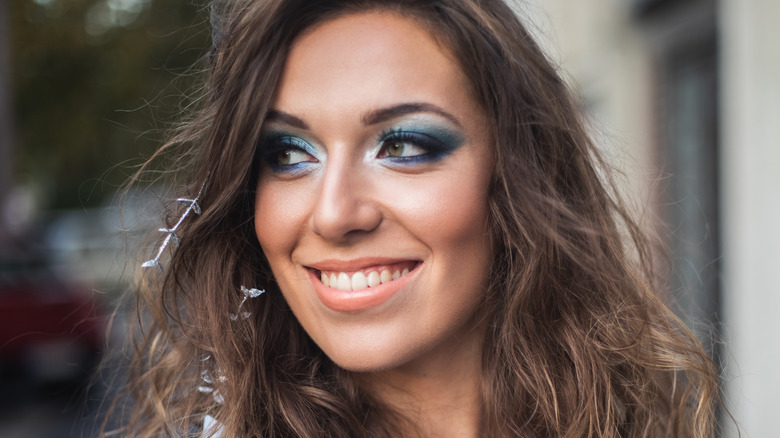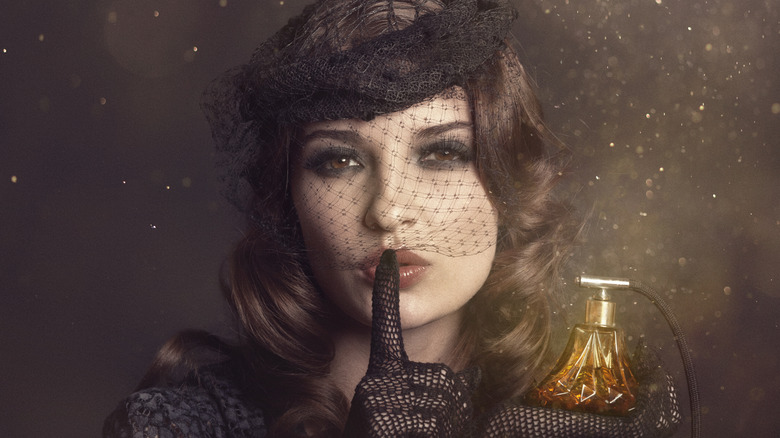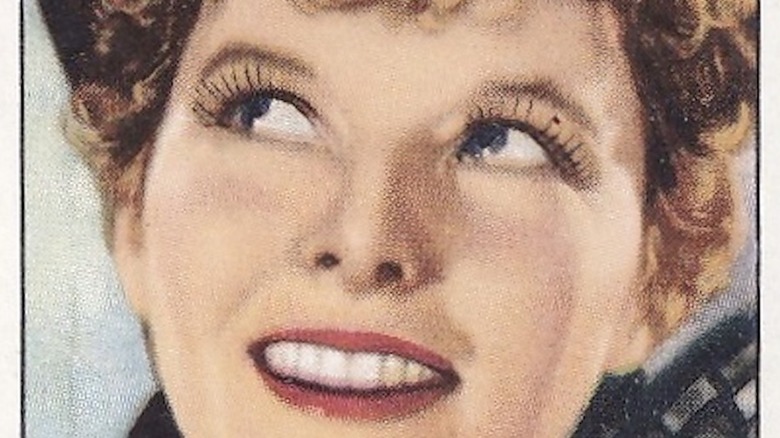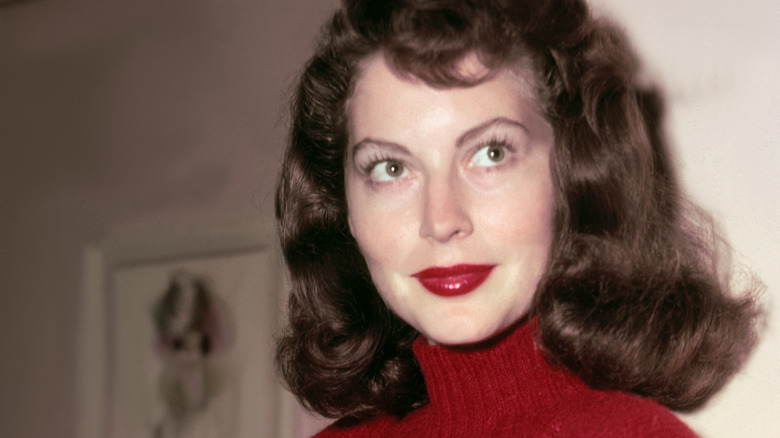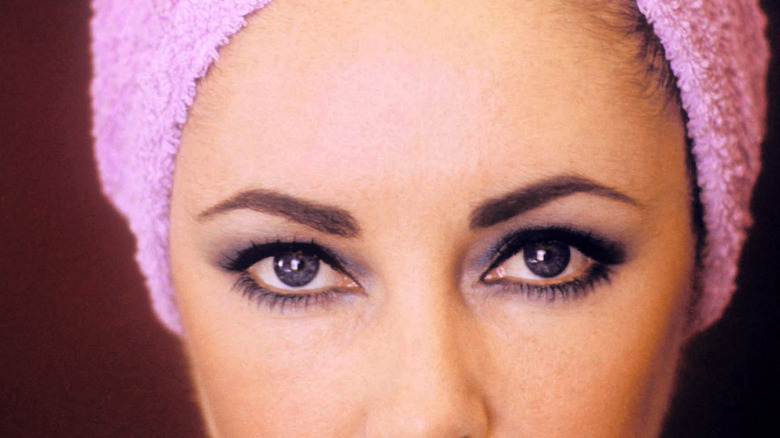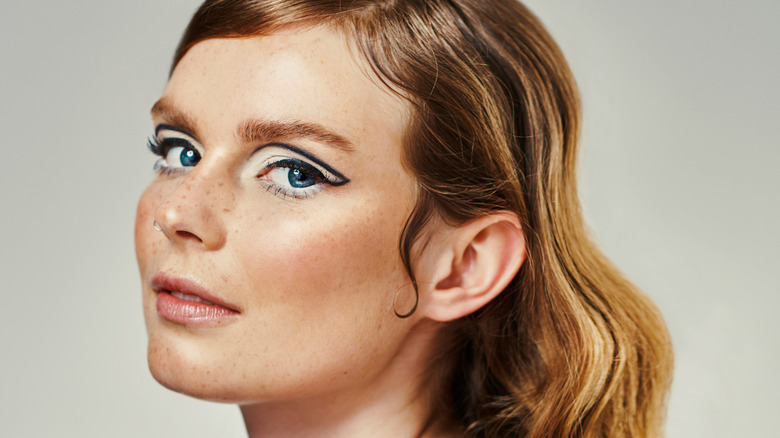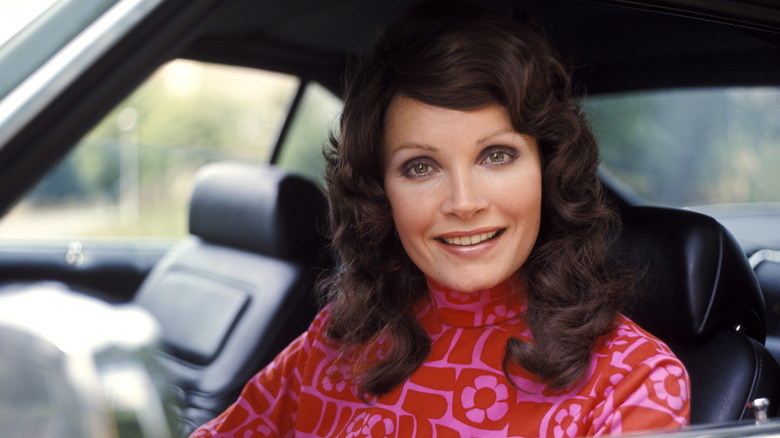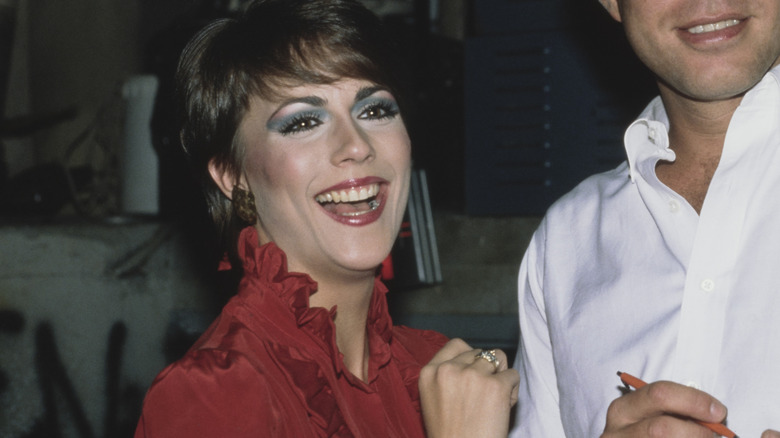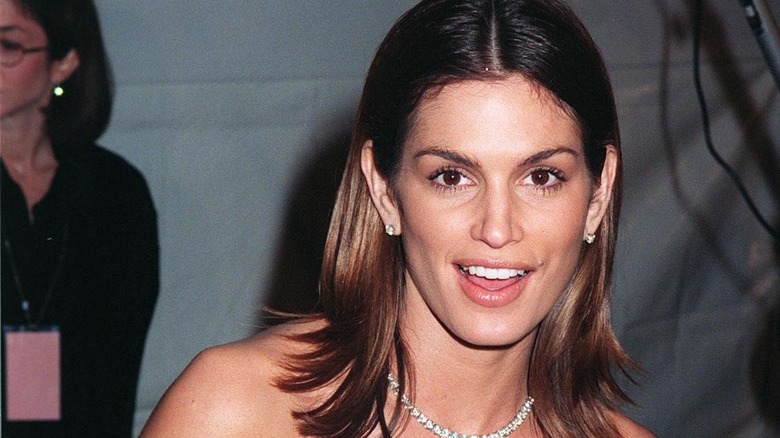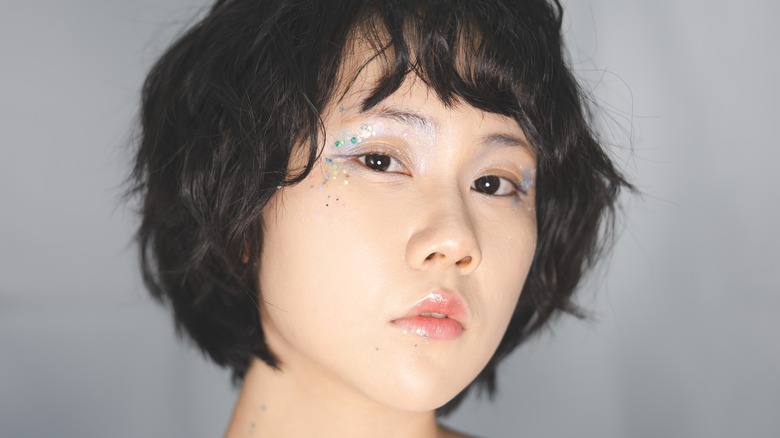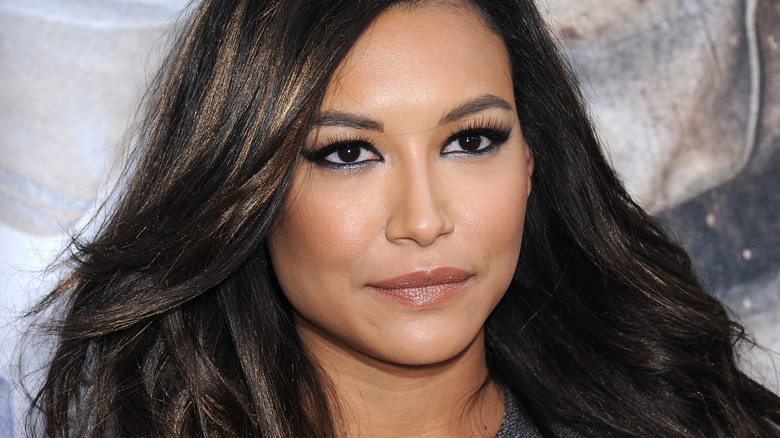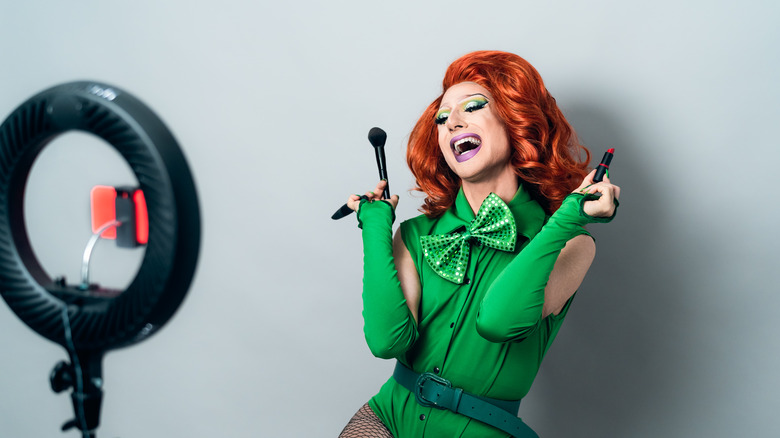100 Years Of Eyeshadow
Whether you like to wear it bold and bright or prefer polished minimalism, eyeshadow completes a look like nothing else. With almost unlimited colors and ways to combine them, eyeshadow is the one makeup product that allows you to express yourself freely.
Eyeshadow has come a long way since it originated in Ancient Egypt. Traces of eyeshadow were first detected on Egyptian makeup brushes where early eyeshadow was a black substance called kohl, sometimes made from lead, ash, and oxidized copper. It was smudged on the eyelids by Pharaohs and religious leaders for ceremonial purposes and to make them appear more god-like. Romans and Greeks (mostly aristocrats) eventually jumped on the eyeshadow train, importing their makeup from places like Babylon and India. However, its significance was totally cosmetic for them, not religious. Eventually, they decided to make their own eyeshadow and took advantage of ingredients like dried flowers, spices, and minerals.
By the Middle Ages, eyeshadow had gotten a bad rap and was seen as less-than-holy by the church (which controlled pretty much everything then). Eyeshadow, and makeup in general, was relegated to prostitutes and stage actors. By the Victorian era, eyeshadow was popping up again, although it was sometimes laced with dangerous substances like arsenic and lead. Since then, eyeshadow has continued to transform and transform the eyes of those who wear it.
1920-1929: Smoky drama dominates
The look of the '20s was defined by smudgy drama. Eyeshadow was dark, bold, and influenced by movies, which were still relatively new. Makeup hadn't been showy in recent decades, (aka the Edwardian era), and was used to look put-together rather than to stand out. The influence of actors (especially Clara Bow, the first "It" girl) in movies inspired women to try bolder looks. This was also the era of the flapper, a party-going young woman who expressed herself no matter what anyone else thought. Part of that expression involved short dresses, smoking, and, naturally, eye makeup. Besides movies and social changes, the recent discovery of Tutankhamun's tomb in 1922 influenced eyeshadow. The bold mystery of Egyptian eyeshadows portrayed on sarcophagi held an exotic appeal.
Modern eyeshadow was just beginning to develop and came in only a few colors like black, gray, brown, and plum. Eyeshadow was usually applied at the lashline with a finger and smudged upwards for a soft smolder. On occasion, it was also worn under the bottom lashes to help the eyes appear larger. Darker and more dramatic looks were typically saved for evenings and special occasions, with little or no eyeshadow worn during the daytime. Fortunately for makeup wearers, many harmful chemicals, like arsenic and lead that were popular in the past had finally been recognized as dangerous and left out of cosmetics.
1930-1939: Feminine fun makes an appearance
After the glitzy excess of the roaring '20s, the U.S. tumbled into a depression, the average woman likely had less disposable income for makeup. That didn't mean makeup purchases stopped altogether, though. The feeling of luxury a small cosmetic purchase could bring meant that women may still have bought makeup to forget the bleakness of the times, even if only for a moment.
If the girl of the '20s was brash, the woman of the '30s was demure. Women's makeup looks became more refined and glamorous, at least on screen. Bold drama was out, and more delicate and feminine styles gained popularity. Women opted for softer shades and less obvious-looking eyeshadow as they tried to emulate actors like Carole Lombard, Greta Garbo, and Katharine Hepburn.
Lighter matte colors were newly available and muscled-out heavy, smoky shades. An expanded range of violets, blues, greens, and grays were being sold, as were some pinks, silver, and gold. While there were more eyeshadow options, it was still mostly worn in the evening or for special occasions. Daytime wear was not common, and if it was worn, it was likely a subtle, neutral shade. Typically, only one color was worn at a time. Eyeshadow was applied with the finger starting at the base of the lashes and then blended gently toward the brow.
1940-1949: Understated neutrals take over
In the '40s, wartime meant rations, which meant fewer makeup options, including eyeshadow. During this era, enhancing natural beauty was key, and makeup was used for that purpose. This was a contrast from earlier decades when makeup was bolder or features were modified (like the highly-plucked eyebrows of the '30s). By now, color films were more prevalent, so it was easier than ever for women to emulate the looks of actors they saw on-screen like Ava Gardner, Hedy Lamarr, and Lauren Bacall. Makeup wasn't just about physical appearance. During the war, it took on a more significant meaning, and women were encouraged to wear it not just to hide signs of sadness but to attract men, as well.
While eyeshadow was nothing new, it still wasn't as commonly worn as other cosmetics, like lipstick, face powder, and rouge. Neutral tones were in, as was matching your eyeshadow shade to your eyes, as opposed to wearing a complimentary color to make your eyes pop, which is more common today. If you didn't match your eyeshadow to your eyes, matching it to your outfit was popular, especially for special occasions. Daytime eyeshadow looks were still pretty subdued. Matte shades were common, and women usually wore one color. Eyeshadow was often applied at the lash line and blended up to the brow for evenings. During the daytime, it typically only covered the lid.
1950-1959: Shimmer steals the show
The '50s were all about emphasizing the eyes. With the end of WWII, people were prospering again and starting to have more fun, including with their eyeshadow. Luxury makeup brands like Elizabeth Arden were growing, and Avon was bringing cosmetics to women's doors. Television was more widely available, so there was more exposure to media and beauty trends. Teens were also now recognized by advertising companies for their spending power, which began to shift advertising and makeup trends. Actors like Marilyn Monroe, Audrey Hepburn, and Grace Kelly were dominating screens and influencing beauty trends.
Popular eyeshadow colors included blues, pinks, purples, greens, grays, and browns, and pastels were particularly en vogue. By now, Revlon was selling eyeshadow palettes containing a few colors designed to create specific looks. Eyeshadow applications became a little more interesting during this decade, although still minimal, as special importance was placed on highlighting the eyes. Eyeshadow wasn't just applied over the lid or up to the brow bone, it was now swiped out and blended to create a winged shape. Matte shades were still popular, but near the end of this decade, fish scales and guano were being added to eyeshadow formulas, which gave them a sheeny luster and brought a new dimension to eyeshadow.
1960-1969: Everyone goes mad for mod
Eyeshadow was still somewhat subdued in the '50s, but in the '60s, it took a turn for the bold and dramatic. Younger generations had growing spending power and were setting trends. The mod (short for modernist) look originated in London and was popularized by models like Twiggy and Jean Shrimpton. It featured youthful, bright colors and contrast between black and white.
For a mod eyeshadow look, pale colors were contrasted with black or another dark color. Light eyeshadow was placed over the eyelid, while the dark color was used to contour around the eye socket, making a stark unblended shape. This made eyes stand out in a rounded and pronounced way, contributing to the popular doll-like aesthetic of the era, where other features were defined softly. In general, pale frosty shades were popular, as were bright ones, with colors like pink, blue, and aqua showing up frequently. Eyeshadow came in more forms and colors now than ever before. Besides matte powders, there were also pearlescent and iridescent shades. Powder wasn't the only option now, either. Cream shadows were increasingly common, as were liquid and crayon shadows.
During this era, the hippie movement was taking hold and impacting how women wore makeup. Some rejected it altogether, and others opted for a more natural-looking application. Those who wanted to achieve a natural look either stuck to skin and earth tones or chose to forgo eyeshadow altogether, instead focusing on things like blush or mascara.
1970-1979: Natural by day, disco glam by night
Even though the ideal look of the '70s was Farah Fawcett-esque natural and healthy, that didn't mean '70s eyeshadow was boring. During the societal changes of the '70s, sometimes disparaging trends cropped up. Women's liberation meant women thought about makeup differently and sometimes skipped it because of its entanglement with being viewed as a sex object. To adapt, cosmetic companies tried to appeal to women's independence and began to offer natural and barely-there makeup options. However, this was also the era of Diana Ross and disco, when eyeshadow looks reached a new level of complexity, artistry, and glamor. Along with that, the '70s saw the beginning of punk music, which celebrated rebellion and self-expression, with rockers like David Bowie rocking eyeshadow and influencing makeup and eyeshadow, too.
While shimmery eyeshadow had been around for a while, it now became even more popular and was used in new ways. Evening looks often involved three colors: a dark tone, a medium tone, and a light and shimmery tone. The rounded shape which was swiped over the brow bone in the '60s was connected with a flick of eyeshadow at the corner of the eye for a more sultry and impactful evening look. Blending colors well was important as opposed to the bolder lines of '60s mod makeup. Blues, purples, browns, and greens were all common, and silver or white was sometimes added underneath the brow or in the inner corner of the eye as a highlight.
1980-1989: A rock star edge begins to trend
The '80s was a time of affluence and excess, which makeup also reflected. While the focus of makeup was not placed as heavily on the eyes — it was now about emphasizing everything at once — rock and roll gave eyeshadow an edge. The punk movement that had taken root in the '70s grew throughout the '80s. Bold eyeshadow colors were popular, and the more you could pack on all at once, the better. Electric pinks, purples, and blues were cool, as were smokey blacks. By now, trend-setting women like Madonna and Whitney Houston weren't the only ones wearing eyeshadow, either. Musicians like Boy George were making their stylistic marks with eyeshadow, too.
In 1980, the book "Color Me Beautiful" bounded into popularity and taught the power of makeup color theory, furthering eyeshadow's ability to facilitate self-expression. To use as many bright, bold, and dark colors as possible, some departed from the previously standard ways of applying eyeshadow by using new shapes to incorporate multiple colors. However, many still applied shadow at the base of the eyelid and blended up to the brow using one color, sometimes two. The '80s were also a time of glitter-doused drama, with glitter being used to finish off many colorful looks.
Not everyone was interested in going over the top, though, as a natural, healthy, preppy look was also prevalent. Natural tones used during this time often had depth to them, with bronze and tan shades being popular.
1990-1999: A mix of mattes and grunge
After the wild ride of the '80s, '90s makeup trends became more conservative and subdued. Mattes were popular, as were tones like gray, brown, and burgundy in the early to mid-90s. Shimmery pastels, especially blue, grew more popular in the later part of the decade. A simple and sophisticated look was gaining traction, and supermodels like Cindy Crawford and Naomi Campbell defined this polished look with toned-down appeal.
Despite the '90s propensity for neutrals and a healthy glow, there were still other influences, like grunge, making an impact. Goth subculture, which began in the '80s was still going strong in the '90s and involved heavy black eyeshadow. Heroine chic, a trend that glamorized drug use and the look that came with it (pale, thin, dark circles under the eyes), was also taking over and making a smeary, slept-in look popular. Each of these styles took the smoky eye to a new and more daring territory.
During the '90s, eyeshadow application tended to be simple. While there were many options and ways to apply eyeshadow, most applied a single color from the base of the lid and blended it up to the eyebrow. By now, eyeshadow brushes were beginning to be used more often for eyeshadow application as opposed to fingers or the sponge-tipped applicators sold in eyeshadow palettes.
2000-2009: A new era of playfulness
With the dawning of the new millennium, eye makeup saw a resurgence of youthfulness. A super sun-bronzed and healthy look was popular and was well accentuated by light, frosty eyeshadows. Icy shades, pastels, cream shadows, and glitter were all common, especially in liquid and cream formulas. However, the sparkle didn't always stop there. Gem applications were a fun way to add even more glitz to an eye look. The most iconic look of this decade may be Britney Spears' frosty blue eyeshadow, but blue wasn't the only popular color. Silvery whites, lavenders, pale greens, and pinks were common, too.
These light shades were often paired with pale, bright blush colors, which was a refreshing change from the sometimes austere sobriety of the more conservative and dark colors that were popular in the '90s. This era, 2007 to be exact, was also when the first-ever makeup tutorial was posted on YouTube, which would eventually transform how women approached makeup. However, even though many had internet access, the first portion of the decade was still pre-social media. While you could get makeup inspiration online, many still got their makeup ideas from movies, TV, music videos, and their favorite beauty magazines.
2010-2019: Bold shadows are chic
With the advent of the YouTube makeup tutorial, the face of makeup was changing. Even though the first tutorial was posted in 2007, it didn't become widespread until later on. By the early 2010s, makeup and eyeshadow tutorials were everywhere, informing women on almost any beauty topic that crossed their minds. Beauty influencers like James Charles and Jeffree Star were pushing the gendered boundaries of makeup and proving it was for everyone. Eyeshadow techniques became more complex and sophisticated. Mega-sized eyeshadow palettes with unique color stories were growing in popularity and offered opportunities to experiment with color combinations.
Despite the many trends present in this decade, a bold smokey eye was a popular go-to. Smokey eyes weren't just black or smudged, pops of color and newer, chicer versions, like a gem-toned or soft brown smokey eye trended, too. Multi-colored eyeshadow looks were common, with shimmers placed on the lid, darker matte shades in the crease, and lighter colors to highlight the brow and inner corner of the eye. Eyeshadow primer also increased in popularity and helped keep complex eyeshadow looks in place.
During the last half of the decade, the clean girl aesthetic gained plenty of traction. Some may have grown tired of time-consuming glam styles, opting for a polished and effortless look that felt refreshing. For this aesthetic, a filled-in eyebrow was more important than eyeshadow, so eyeshadow shades were often neutral or foregone altogether.
2020-Present: A new frontier of experimentation
From 2020 and beyond, there are no limits when it comes to eyeshadow. Due to the pandemic, mask-wearing became necessary, which meant more emphasis was placed on the eyes. Now more than ever, makeup wearers have the ability to not only tailor their eyeshadow to their tastes but also to their eye color and eye shape. There's no shortage of formulas, either. While powdery palettes were more popular in the 2010s, 2020 and after is seeing a resurgence of cream, crayon, and liquid shadows to help create a more dewy look.
Makeup trends change overnight, with makeup inspiration being drawn from anywhere and everywhere with the help of social media. Not only do model celebs like Bella Hadid help popularize natural-glam looks like the fox-eye trend, but beauty influencers and even lesser-known makeup lovers on Instagram also help influence today's eyeshadow trends, whether its bold duo-chrome shadows or glittery cut-creases.
That doesn't mean we aren't still looking to TV for ideas, though, as the super creative looks of the TV show Euphoria have impacted our approach to eyeshadow. 2020 has ushered in more freedom with colors, as well. While warm neutrals and dark shades may have dominated in the 2010s, pastels and bright pops of color are becoming popular once again. Old and gendered ideas about makeup are firmly out the window, with more male, trans, and nonbinary makeup influencers highlighting new approaches to makeup, and eyeshadow.
